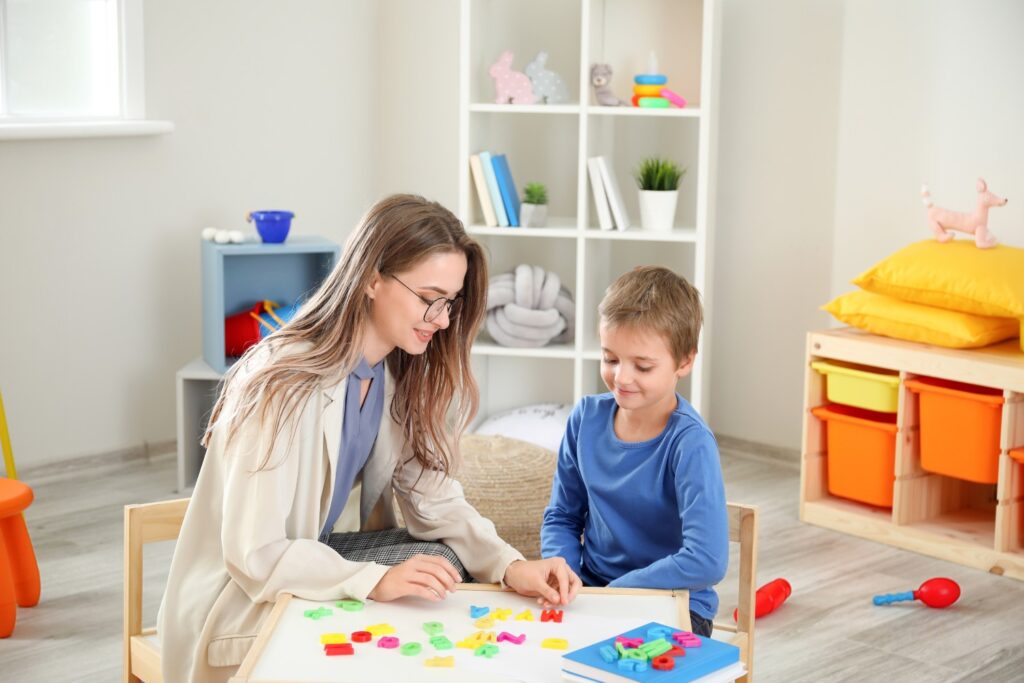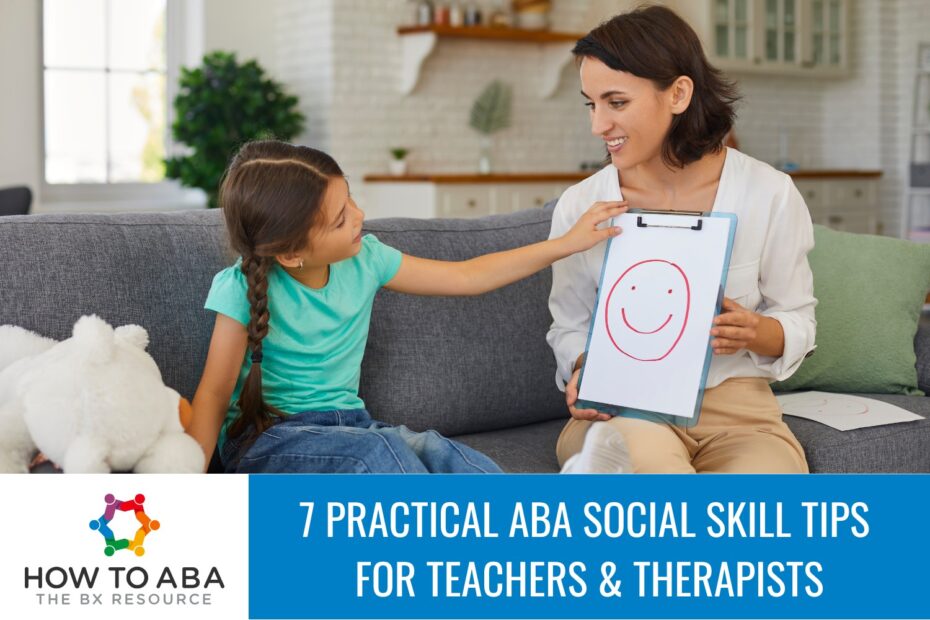When we think of classroom learning, our minds often jump to academics – reading fluency, multiplication tables, or science projects. But for many students, especially those with autism or other developmental differences, mastering social skills is just as important as mastering the curriculum.
Social skills are the invisible glue that holds a classroom together. They enable students to collaborate in group activities, ask for help when needed, and foster the relationships that make school a more enjoyable and productive environment. For teachers and therapists using the principles of Applied Behavior Analysis (ABA), the classroom is a rich environment to support, teach, and generalize these life skills.
Read on for some practical ABA-based tips to help teachers and therapists integrate social skills training into the classroom, without needing a separate lesson plan.
1. Start with Observation: Identify the Missing Pieces
Before diving into teaching, spend time observing your student in the natural classroom environment.
- Are they avoiding group work?
- Do they interrupt conversations?
- Are they unsure how to ask a peer to play?
ABA emphasizes individualized intervention, so it’s crucial to know exactly which social behaviors are lacking or need refinement. Look for both the absence of desired behaviors (e.g., not greeting others) and the presence of interfering behaviors (e.g., grabbing toys without asking).
From there, you can begin to prioritize which social skills to teach first, often focusing on the ones that will yield the greatest success or access to reinforcement (like joining play).
2. Use Natural Opportunities to Teach Skills
Social skills aren’t meant to live on flashcards or worksheets. ABA encourages teaching within the natural environment, and there’s no better place than the classroom. Whether it’s a morning circle, snack time, or small-group work, real-life interactions are a constant.
Let’s say your student struggles with turn-taking. Instead of teaching the concept abstractly, embed it during a science experiment where students take turns pouring ingredients. Prompt them with a simple, “It’s your turn,” and reinforce when they wait patiently or pass materials appropriately.
The key here is timing – teaching a skill in the moment it’s needed. This builds not only competence, but confidence.
3. Prompt, But Don’t Hover
Effective prompting is a cornerstone of ABA. But in a classroom setting, the goal is to strike a balance between helping the student succeed and fading prompts as quickly as possible to build independence.
Use least-to-most prompting when possible. For example, if a student is learning to greet peers, start with a visual cue (like a card that says “Hi!”), and only provide a verbal or gestural prompt if needed. Over time, fade the visuals and prompts so the student initiates independently.
For group settings, discreet prompting methods – like using a sticky note or subtle hand signal – can help maintain the flow of the classroom without drawing attention to the student.
4. Incorporate Peer Models
Peers are powerful. Research consistently shows that peer-mediated interventions can be highly effective in building social skills. Watching a classmate raise their hand to speak, ask for help, or invite someone to play offers natural and relatable examples of social behavior.
Teachers and therapists can pair a student who is still learning social skills with a peer buddy. Encourage structured activities like partner reading, cooperative games, or group projects, where the social demands are high, but the structure provides support.
Make sure peer models are prepped and willing, and don’t forget to reinforce them, too! A simple “Thanks for being a great friend to Jonah today” can go a long way in promoting inclusivity.

5. Teach Flexibility and Coping, Not Just Scripts
It’s tempting to teach social scripts: “Hi, my name is ___. Can I play with you?” And for some learners, these scripts are a helpful starting point. But they can only go so far.
Classrooms are unpredictable. Sometimes the game changes mid-play. Sometimes a classmate says no. That’s why it’s important to teach flexibility and coping strategies alongside the scripts.
Role-play common scenarios with varied outcomes. What if someone doesn’t want to play? What if they say, “Maybe later”? Practice responses like, “Okay, maybe next time” or “I’ll ask someone else.” Then, reinforce appropriate responses to disappointment just as much as the successful interactions.
6. Measure and Celebrate Progress
ABA is rooted in data-driven decisions, and social skills should be no different. Whether it’s tallying how many times a student greets a peer or noting the number of successful turn-taking exchanges, measurement helps track growth – and identify where additional support is needed.
But remember: the classroom is a busy place. Choose simple data collection methods that won’t disrupt instruction – like momentary time sampling, quick tallies, or even video clips to review later.
And most importantly, celebrate progress, even if it’s small. A student who once avoided peers but now shares a toy deserves recognition. So do the classmates who showed patience and kindness. Celebrating social wins encourages continued effort for everyone involved.
7. Collaborate Across Roles
Social skills instruction shouldn’t fall solely on the shoulders of therapists or special education teachers. Collaboration is key. General education teachers, speech-language pathologists, aides, and parents all have valuable roles to play.
Hold brief check-ins. Share what’s working. Create unified language around behavior, so that whether a student hears “Wait your turn,” “Hold on,” or “Let’s be patient,” the message remains consistent.
The more unified the team, the more consistent the student’s experience – and the faster the progress.
Teaching social skills in the classroom isn’t about adding another item to your overflowing to-do list. It’s about weaving support into the moments that already exist – the interactions, transitions, and shared experiences that define school life.
For teachers and therapists using ABA, your expertise in breaking down behavior, reinforcing success, and promoting generalization is invaluable. But just as important is your creativity, your collaboration, and your commitment to helping students not only succeed in school, but connect, belong, and thrive.

